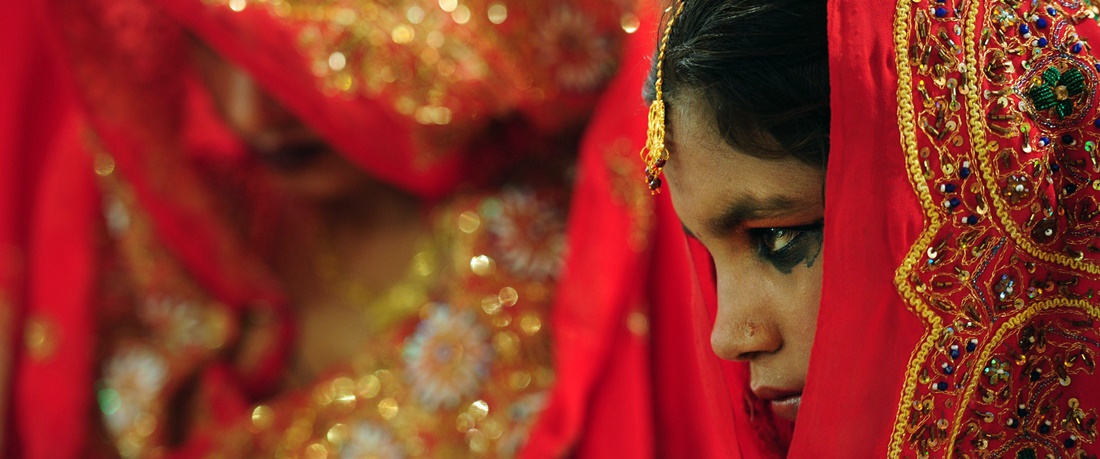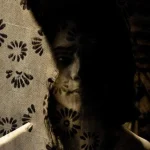Child marriage is defined by the United Nations Children’s Fund (UNICEF), as a formal marriage or informal union before the age of 18. Although statistics show that the practice affects girls in higher percentages, it is a reality for both boys and girls. Each year, 15 million girls are married before the age of 18, that is, 28 girls every minute.[1] Consequences of child marriage are innumerable and include complications related to early pregnancy, death during childbirth, increased domestic violence and inhibits personal growth.
According to UNICEF’s ‘State of the World’s Children Report 2016’, 3% of girls below the age of 15 and 21% below the age of 18 have been married in the last year in Pakistan. Many of these child marriages take place in remote areas and are therefore unreported.
It can be argued, that child marriage is embedded in Pakistan’s customary and cultural practices. A murder or land dispute is in some instances resolved by an underage girl being offered to the aggrieved party as compensation through a ritual such as, Swara, Watta Satta, Sang Chatti, Irjaai or Vulvar. These customs are sanctioned and prescribed by a Jirga or Panchayat, i.e a council of the elders from the community who form the local judiciary. This article explains the paradox of customary practices that endorse child marriage in the context of national legislation that criminalises the practice.
Under a Swara or Vani marriage, where one party commits a crime against the other party, the offending party offers a virgin female relative to the victim’s family in marriage as compensation. The victim’s family demands approximately three girls and chooses one out of those offered. Once the girl is selected, a feast is served and the dispute is officially settled. Crimes which can be compensated by Swara include murder, a land or financial dispute and ‘honour’ related crimes.
Exchange marriage, Watta Satta, is another custom that enables child marriage. In this scenario, it is arranged between families that a brother and sister from one family marry corresponding siblings in another family. Some of these cases include unions between individuals with a substantial age gap to the extent that one party may not even be born yet. Watta Satta is generally performed to settle property disputes or create marital security, however, it ends up with violent consequences for the women involved both physically and psychologically.
In Balochistan, a system of Vulvar or bride price is followed.[2] The father or brother of the girl, no matter how young, take money from the groom or his family for tying a nuptial knot. In this way, the groom buys the girl as an item of property.
Child marriage in Pakistan is criminalised under the Child Marriage Restraint Act, 1929. The Act provides that the legal age for a female to marry is 16 and for a male it’s 18. The penalty for person committing a crime under the Act is a mere 1000 PKR (approximately $10). In February 2017, the Pakistan Penal Code, 1860 (PPC) was amended to include a fine of up to 1 million PKR ($9,547) and imprisonment up to 10 years for the offender. In addition, s.310 PPC prohibits the sale and underage marriage of girls.
In May 2017, the National Assembly rejected the draft Child Marriage Restraint Act for the second time.The draft proposed increasing the legal age for females from 16 to 18. On the other hand, provincial legislation has taken strides ahead, for example the Sindh Government adopted the change regarding minimum age in 2014 through the Sindh Child Marriage Restraint Act.
While there has been a decrease in child marriage in Pakistan over the years due to the stricter penalties imposed by updated legislation, there is still a long way to go. The battle between local custom and national legislation continues. In February this year, a man who committed adultery was ordered by the local Jirga to give his two girl children, aged 8 and 2, and a monetary fine as compensation to the family of the woman he had committed adultery with. Cases such as this reveal that despite the stricter laws being in place; law makers desperately need to improve implementation, legal awareness and develop mechanisms to manage local legal systems to keep them in line with not only national but international standards.
[2] Generally, there are two types of bride price in the district i.e vulvar and dowry. The vulvar is the payment in cash or kind by the groom’s family to the bride’s family. See: www.balochistan.gov.pk/index.phpoption=com_content&view=article&id=835&Itemid=1087
Roheen Ahmad – Intern, Pakistan, iProbono







